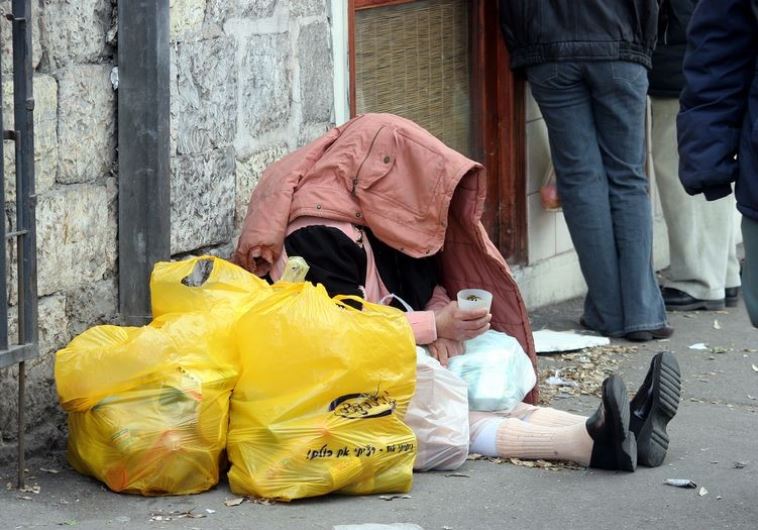State blamed as shocking new report highlights deep poverty across Israel
1,412,000 adults and 1,024,000 children live under the poverty line, with 1 in 3 poor children skipping meals.
 A homeless person begs for change in Israel(photo credit: MARC ISRAEL SELLEM/THE JERUSALEM POST)
A homeless person begs for change in Israel(photo credit: MARC ISRAEL SELLEM/THE JERUSALEM POST)